The Ugandan government recently announced that it plans to contract Yapi Merkezi, the contractor implementing Tanzania’s Standard Gauge Railway, to construct Uganda’s SGR on the eastern and western sections of Malaba-Kampala-Kigali.
According to reports, Yapi, a Turkish company, is doing excellent work on the SGR project in Tanzania.
After eight years of non-execution, the government terminated China Harbor Engineering Company’s (CHEC) contract to construct the nation’s first phase of the $2.2 billion standard gauge railway (SGR) a few months prior to the current development.
Yapi Merkezi is expected to use its network to find Export Credit Agencies (ECAs) to fund and resuscitate the project. It was previously reported that the project’s financing model would also change.
Reported earlier
Jun 2016
Uganda to sign financing agreement for SGR by October
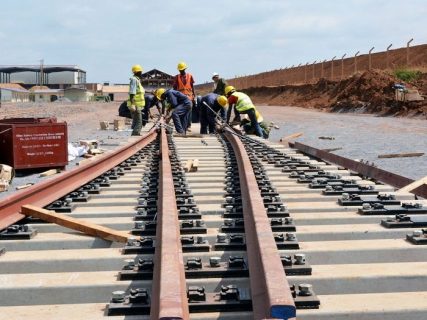
The Ugandan Government has confirmed that by October this year, it will have closed the financing agreement for the construction of the first phase of the Standard Gauge Railway (SGR) project.
Eng. Kasingye Kyamugambi, the SGR project coordinator confirmed the news and said that the first phase which is expected to run from Malaba to Kampala will cost a whooping US$ 2.3bn and will be funded by the China EXIM Bank.
“By the end of this financial year-2016/17, we expect to have started construction of the first phase. The hope is that we shall have financial closure of the US$ 2.3bn with China’s EXIM Bank by the end of October 2016,” Mr Kyamugambi said.
The Ugandan government also signed China Habour Engineering Company as a contractor tasked to ensure local content and companies are included in the project.
“We want to ensure that there is at least 40 per cent local content in the project; all suppliers of cement and steel should be local companies and 90 percent of the projected 16,000 jobs should also be reserved for Ugandans,” a government official said.
Jun 2017
Ugandan contractors to play a role in the construction of Standard Gauge Railway
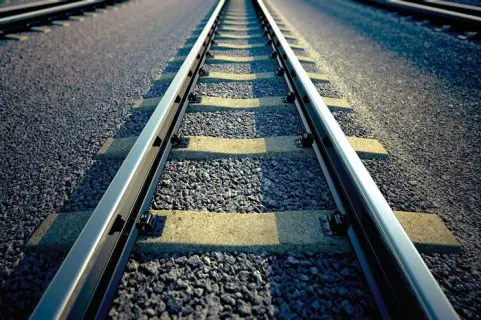
Uganda contractors have a reason to smile after the Minister of Works and Transport Monica Azuba announced that they will be participating in the proposed Standard Gauge Railway (SGR) project.
According to Azuba, she expects all the local content strategies to be used so that they can create more opportunities for them. She asked Ugandans and contractors to support the implementation of the strategy in order to ensure that maximum benefits from the project trickle down to the last citizen.
She added that the process of choosing companies that will participate in the project will be very competitive and gainful participation of citizens and the Ugandan private sector in this multi-billion infrastructure project.
Speaking while she was meeting a group of local steel and cement manufacturers in a city hotel the minister added that they discussed how the companies will help the locals directly and how they will be involved in the project.
“The local content strategy provides that up to 40 per cent of supplies for works come from local entities while out of every 10 employees, nine should be Ugandan and foreign skills should only be sourced if such skills cannot be found locally” she added
Jul 2017
Uganda approves US$2.9b loan for the construction of SGR
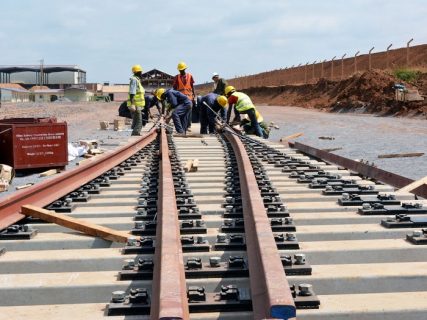
Ugandan President Yoweri Museveni has approved the US$2.9 bn loan for the construction of the Standard Gauge Railway (SGR) from Malaba in Kenya to Kampala.
Initially, Uganda was considering building a railway through Tanzania after failing to get assurances from Kenya that it would extend the Mombasa-Nairobi line to Malaba. However, Kenya has committed to extend the first phase of the SGR to Nairobi in phases to Naivasha, Kisumu, and eventually Malaba.
President Museveni’s loan approval indicates that China has agreed to fund the line under the terms of the project being a joint project between governments including Rwanda, which will be considered the last stop of the Northern Corridor under the East Africa Railway Masterplan. Another line in the Central Corridor will be from Dar es Salaam to Burundi and Rwanda will complete the circuit meant to boost trade in the region.
According to President Museveni’s letter to parliament, the US$600mn loan is more than the US$2.3 bn contained in the feasibility study and should be on condition that concerns over the technical specifications and project costs raised by the Parliamentary Committee on Infrastructure in February will be addressed.
The Treasury confirmed that the money included the costs of arranging for the loan from China Exim Bank, such as insurance, even as State Minister for Planning David Bahati suggested the higher amount could be the result of a typing error.
“Are you sure it was $2.9 billion? I seem to remember writing $2.29 billion,” said David Bahati. Jim Mugunga, Ministry of Finance spokesperson clarified that the extra allocation was meant to cover borrowing costs. “When you go to negotiate with lenders, the bank asks for management and insurance fees,” Mr Mugunga said.
Depending on the project risk, insurance ranges from 5-10%. For the first phase of Kenya’s standard gauge railway project, it was 6.93%. Uganda has been collecting a 1.5% infrastructure levy on imports since the 2014/15 financial year under an arrangement by East African partner states to support the construction of the railway.
Ugandan parliament report reveals that in the case of the Karuma hydropower dam, the project cost was estimated to be at US$1.7 bn and the Uganda government borrowed US$1.4 bn of which the rest was counterpart funding. Management and insurance fees for the project were US$69.8 mn. I noted that Uganda has previously borrowed money from China Exim without such a notable cost escalation.
“Uganda is expected to provide counterpart funding of 15% or US$345 mn largely for compensation of people affected by the project. This would take the extra borrowing totalling up to US $900 mn,” said SGR Co-ordinator, Kasingye Kyamugambi.
The Uganda line is expected to cost US$8.2 mn per km, compared with US$5mn per km for Ethiopia and US$7.7 mn per km for the Mombasa-Nairobi phase in Kenya. China Harbour Engineering Company is nevertheless expected to build the 273 km line within a period of 40 months. The cost of each project is determined by the terrain.
Jun 2018
Uganda to sign financial agreement for the Kisumu-Malaba SGR
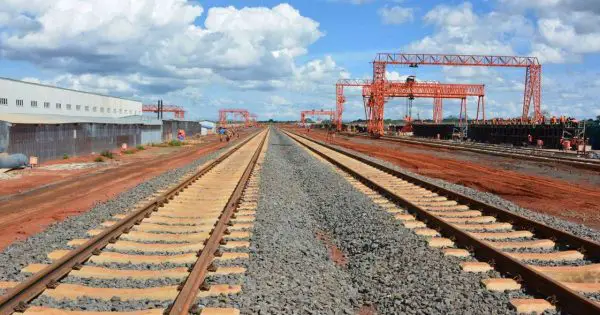
Plans to connect the East African region through railway networks, such as the Standard Gauge Railway (SGR) seem to be moving in the right direction. This is after Uganda’s president Yoweri Museveni agreed to the signing of the final financial deal for the Kisumu-Malaba-Kampala part of the Standard Gauge Railway.
Uganda, which has delayed the signing of the financing agreement for the SGR for more than two years, announced that it will sign the final financing agreement by September this year after a meeting with Kenya’s president Uhuru Kenyatta and the Chinese officials.
Kenya, on the other hand, has already begun laying tracks for the US $1.5 bn phase of the SGR line between Nairobi and Naivasha as it awaits Uganda to secure joint funding for the Kisumu-Malaba stretch.
Also Read: Rwanda, Tanzania to Review Isaka-Kigali standard gauge railway design
Joint mission
President Yoweri Museveni also requested a joint mission with Kenya to Beijing to meet China’s Export and Import, EXIM bank officials to expedite the financial closure for the two countries’ multi-billion-dollar projects.
In Kenya, more than one million passengers have used the SGR line in one year and more than 800,000 tonnes of cargo have been transported since the cargo segment of the railway was started in January this year.
Once the railway line to Malaba is constructed, Uganda and Kenya are bound to have GDP growth of at least 1.5%, drastically reduced the number of heavy trucks on roads, a fast, efficient, and reliable mode of transportation along with many other benefits from the construction of the Naivasha-Kisumu-Malaba Standard Gauge Railway.
Oct 2019
Uganda begins demarcating Standard Gauge Railway (SGR) line route
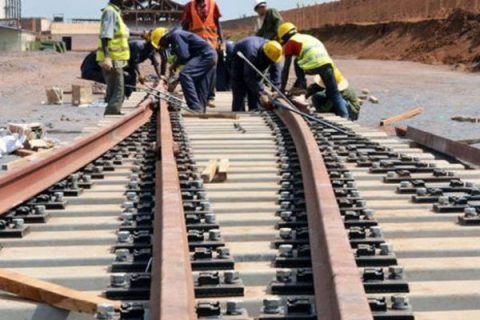
The Government of Uganda has started demarcating the route on which the anticipated Standard Gauge Railway (SGR) line is set to pass.
The demarcation exercise, which is expected to mark out the entire path from Malaba to Kampala, began in the village of Bulaka in Namutumba district and will cover different areas in Bukedi and Busoga Sub-regions before heading to other districts.
Also Read: URC has embarked on a five-year plan to revive the meter gauge railway
The demarcation exercise
Speaking during the launch of the demarcation exercise in Bulaka village, Namutumba Sub-county over the weekend, Eng. Canon Perez Wamburu, the SGR project coordinator, said that the exercise was meant to protect the route from encroachment in preparation for the handover of the project soon to the Contractor so that construction can begin without any hindrances.
“The demarcation exercise is necessary to keep people off from the acquired land. We have noticed in the past that even after compensation, some come back and start their farming, construction, brick making, and other human activities on what is now government property.” Wamburu said.
Project funding
Eng. Canon Perez Wamburu further dismissed the ongoing allegations that the SGR project had failed and said that it is wrong because the government of Uganda under President Museveni is doing everything in its capacity to make this project a reality.
He said the government has already re-submitted a loan application to the Exim Bank of China through the Ministry of Finance to get resources to fund the exercise.
“We cannot tell for sure when the funds are going to be released because the bank is unpredictable, but we are pushing and hopefully soon, we will hand over the project to China Harbor Engineering Company so that they can begin their work.” the SGR project Coordinator clarified.
Recently, the project management team met district leaders from where the Standard Gauge Railway alignment traverses to update them on the status of the project.
Nov 2019
Uganda seeks US $2.3bn from China to fund the SGR project
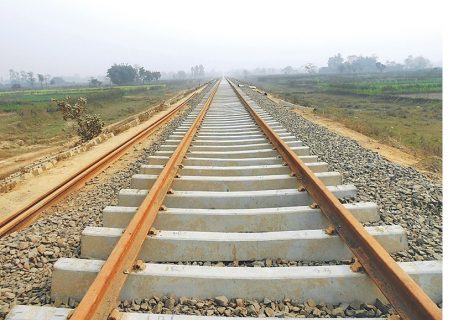
Uganda has resubmitted a loan request to China for the 271km Standard Gauge Railway (SGR) project linking its capital, Kampala, with the Kenyan border after re-negotiating the contract price and improving security.
Perez Wamburu, coordinator of the SGR project revealed that the government of East Africa’s third-biggest economy submitted the application to the Export-Import Bank of China in September to provide 85% of the total cost. Under the new proposal, the project cost was reduced by US $26m.
Uganda SGR project
The initial loan request was delayed after the lender sought a comprehensive feasibility study, which has since been submitted, the coordinator said. An additional link was added from Kampala to the nearby Bukasa port on Lake Victoria as well as fencing off the entire railway route to protect it from vandalism.
The spur to Lake Victoria, which the country shares with Tanzania and Kenya, is set to handle imports and exports via the neighbouring countries.
Also Read: Tanzania close to securing funding for the second phase of SGR Project
Cutting transportation costs
Uganda, Kenya, Rwanda, and South Sudan agreed in 2014 to build standard gauge railways in their territories as part of a regional plan to cut transportation costs.
“Kenya and Uganda continue to discuss harmonization of construction timelines and construction is expected to resume once the outstanding issues are addressed,” Wamburu said. Uganda has already acquired 126km of the corridor for the Malaba-Kampala SGR with land acquisition for the route expected to be concluded by June 2022.
The Uganda Standard Gauge Railway will link neighbouring countries of Kenya, Rwanda, the Democratic Republic of the Congo, and South Sudan. The new Standard Gauge Railway is intended to replace the old meter gauge railway that was built by colonialists a long time ago and has proved to be old, inefficient, and expensive to maintain.
Nov 2020
Uganda: “Negotiation for the financing of the SGR project is ongoing”
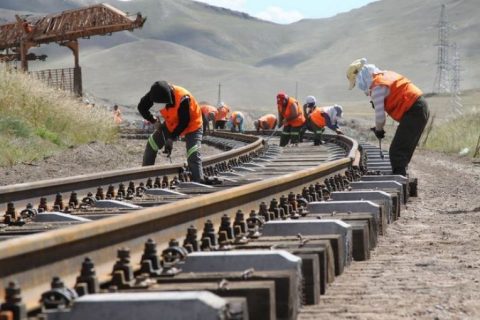
The Uganda Railways Corporation (URC), embodied by Mr. Stanley Ssendegeya, the new managing director of the parastatal railway of the East African country has said that the government is negotiating with the Export-Import (Exim ) Bank of China for the financing of the construction of the proposed Standard Gauge Railway (SGR) project.
The M.D. explained that the financing, amounting to a total of at least US$ 2bn might be available in a year or less. “In a year or less, the funding will be on board and we expect the construction works to begin in the first or the second year following the conclusion of the negotiations.
This is the new development following the previous announcement that the government had put the SGR project on hold to invest in revamping the old meter-gauge railway from Kampala to Malaba on the Kenyan border.
Plans to extend the rail line to South Sudan
On the other hand, earlier this month the finance Minister for Uganda Mr. Matia Kasaija, said that the government contemplates extending the railway line to South Sudan in the case of the availability of funds.
“Being the cheapest means of transport, railway investments need to be prioritized. If we rehabilitate the meter-gauge railway all the way to Tororo and if money allows us, we may have to build it up to South Sudan,” he said.
South Sudan is an integral part of Uganda’s export market being the second-highest destination after the Republic of Kenya. Country, last year, earned Uganda approximately US$ 351.5M. Therefore, extending the railway line would reduce the cost of exports to the country and consequently increase Uganda’s export earnings.
Plans revived for Uganda SGR line project from Malaba–Kampala
Uganda’s President Yoweri Museveni recently revealed that his government is committed to building the proposed standard gauge railway (SGR) linking the country’s capital, Kampala, with the Kenyan border in Malaba.
Museveni made the revelation during the third biannual meeting of private sector chief executive officers in Karuma. He said, “We’re going to build a brand new standard gauge railway line from Kampala to Kasese.
Later on, we will extend it from Kampala to Malaba, the border of Kenya, and then to South Sudan. The aim is to lower the cost of transport in addition to improving our competitiveness.”
Contract for the Malaba–Kampala section of the Uganda Standard Gauge Railway (SGR) project terminated
The contract for the implementation of the first phase (Malaba–Kampala) of the Uganda Standard Gauge Railway (SGR) project has been terminated. The contract which was awarded to China Harbour Engineering Company (CHEC) was terminated by the government of Uganda.
Reportedly, this comes after the Chinese firm failed to convince the Export–Import (EXIM) Bank of China, the country’s main infrastructure projects financier for the past decade, to finance the project. The Ugandan government through Attorney General Kiryowa Kiwanuka started to review CHEC’s contract in June 2022 after it had become apparent that China Exim Bank had grown cold feet on bankrolling the project.
Uganda has now opted for a different financing model with Yapi Merkezi of Turkey which is building part of the Tanzanian SGR network. The firm is expected to submit a response to the East African country government’s request for the implementation of the project in the next few weeks. This will pave the way for procurement according to Uganda SGR Project Coordinator Perez Wamburu.
May 13, 2023
Work on Uganda’s Standard Gauge Railway to begin in August
Work on the Uganda Standard Gauge Railway (SGR) project is set to begin in August. This comes following the acquisition of funding for the project from Standard Chartered Bank.
Uganda had previously turned to the China Exim Bank for funding to construct the Malaba-Kampala section of the Standard Gauge Railway. However, the government was unable to acquire funding from the Asian country.
A Turkish company has already been awarded the contract for the construction of the railway line.
An insight into the Uganda Standard Gauge Railway (SGR) project
The Uganda Standard Gauge Railway is a planned railway system that will link the country to the neighbouring countries of Kenya, Rwanda, the Democratic Republic of the Congo, and South Sudan.
The railway will be developed under the East African Railway Master Plan replacing the old, inefficient meter-gauge railway system. It will consist of four major sections which are Malaba–Kampala, Tororo–Gulu, Kampala–Mpondwe, and Bihanga–Mirama Hills sections.
Also referred to as the Eastern Line, the Malaba–Kampala section will stretch from the border with Kenya at Malaba, through Tororo and Jinja, to end at Kampala. The total distance of this section is approximately 219 kilometres.
The Tororo–Gulu section which is also referred to as the Northern Line, will extend from Tororo, through Mbale and Lira to Gulu, a distance of approximately 106km. From Gulu, the railway will be built to Elegu, and on to Nimule and Juba in South Sudan. Another section will be built southwestwards from Gulu through Pakwach to Goli at the Border with the Democratic Republic of the Congo.
The Kampala–Mpondwe section which is also referred to as the Western Line, on the other hand, starts in Kampala. It passes through Bihanga in Ibanda District to Mpondwe at the border with the Democratic Republic of the Congo. This is a distance of about 430 kilometres.
Lastly, the Bihanga–Mirama Hills section (Southwestern Line) stretches from Bihanga, through Ibanda and Mbarara to end at Mirama Hills, at the border with Rwanda. The entire route is approximately 191 kilometres.
As of April 2017, the cost of the entire Uganda SGR project was quoted at US 45.6 trillion (approximately US 12.8bn). The construction of the 1000km line is expected to be financed by the government of Uganda using borrowed money.

